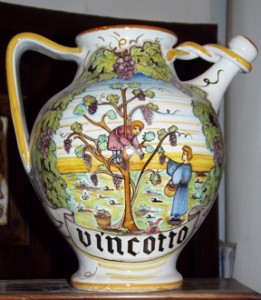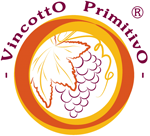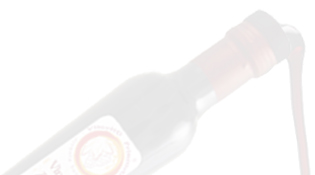History of Vincotto Salentino

Il vaso del Vincotto fa parte delle ceramiche conservate presso l’Antica Farmacia “Provenzano” (dal 1814) a Gallipoli
In Salento Vincotto is produced from the slow reduction together of a blend of cooked grape must and of a wine that has started to spoil and sour attaining at the consistency of dense non-alcoholic syrup. This they call Vincotto Salentino The tradition of this Vincotto Salentino goes back to the times of the ancient Romans when grape musts were reduced over heat to facilitate conservation and transportation. In more recent times, from 1863, Salento, an area of Apulia, greatly expanded the vineyards which also led to a great increase in the production of Vincotto.
Wine production in these times was hampered by the unsophisticated understanding of wine production which was the cause of wine spoiling. Not to waste this precious resource, it was blended with cooked grape must and then, put through a long slow reduction to produce the Vincotto. In this way all the therapeutic and organoleptic properties typical of red wines were maintained. The added value of Vincotto Salentino arises also from the fermentation cycle of the wine from which it was produced, which forms the basis of all the most prestigious products of Italian tradition.
The simple cooked grape must is called in the local Salentine dialect ‘cuettu’ which is a product of a thousand uses suitable for all the members of the family including children and the elderly for its beneficial health properties. Sometimes in the Apulia region people inaccurately call this grape must Vincotto.
The picture of the Vincotto vase was taken in the Antica Farmacia ‘Provenzano’ (since 1814) in Gallipoli

